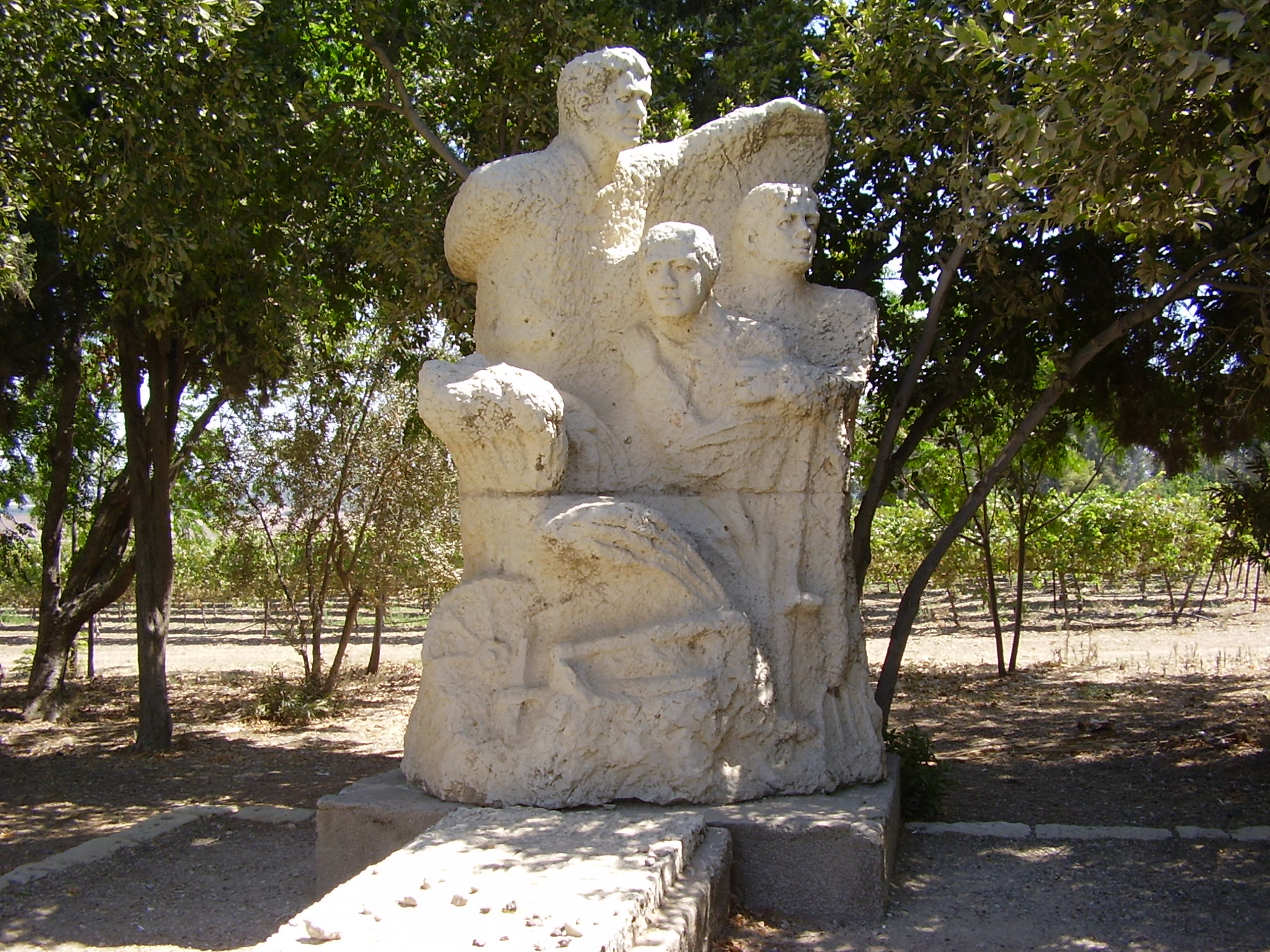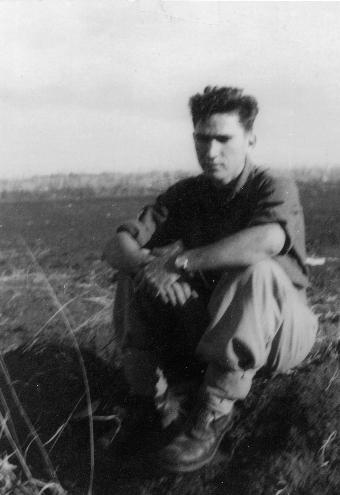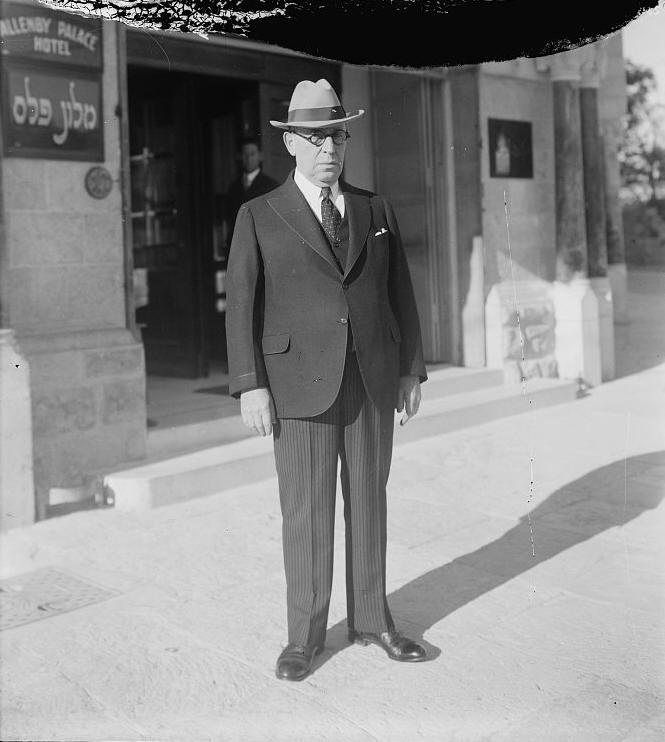|
Hulda, Israel
Hulda () is a kibbutz in central Israel. Located in the Shephelah near the Hulda Forest and the Burma Road, it falls under the jurisdiction of Gezer Regional Council. In it had a population of . The acclaimed Israeli writer, Amos Oz spent half his life living on the kibbutz. Etymology The kibbutz takes its name from the Palestinian village of Khulda, which existed nearby until the 1948 Arab–Israeli War. History Ottoman rule In 1905, the Anglo Palestine Bank purchased of land from the Saidun tribe for a Jewish settlement near the Jaffa–Jerusalem railway. Ownership of the land was transferred to the Jewish National Fund which turned it over to the of the Zionist Organization (ZO). In 1909, the Hulda farm was established and a building (today Herzl House) was constructed to house the manager of the farm and was later used by the kibbutz members. British Mandate Groups of pioneers who trained at the Hulda farm helped establish Ein Harod (1921), Kfar Yehezkel (1921), ... [...More Info...] [...Related Items...] OR: [Wikipedia] [Google] [Baidu] |
Gordonia (youth Movement)
Gordonia () was a Zionism, Zionist youth movement. was a Zionist youth movement established in 1925. Its ideological foundation was based on the Labor Zionism, Labor Zionist teachings of A. D. Gordon. Members of the movement studied Hebrew and, upon completion of their training, formed organized groups in preparation for Aliyah, immigration to Palestine (region), Palestine. History Founded in 1925 in Second Polish Republic, Poland, Gordonia was a Zionist youth movement that promoted Aliyah, Jewish immigration to Kibbutz, kibbutzim in Mandatory Palestine, Palestine during the interwar period. These settlement efforts contributed to the development of the kibbutz movement in Palestine and later in the State of Israel. Established after several other Labor Zionism, Labor Zionist movements, Gordonia initially faced challenges related to its ideological identity. It emerged in part as a response to movements such as Hashomer Hatzair, which it viewed as influenced by non-Zionist ideolog ... [...More Info...] [...Related Items...] OR: [Wikipedia] [Google] [Baidu] |
Kfar Yehezkel
Kfar Yehezkel (, ''lit.'' Yehezkel Village) is a moshav in northern Israel. Located in the Jezreel Valley, six kilometres southeast of Afula, it falls under the jurisdiction of Gilboa Regional Council. In the moshav had a population of . History Kfar Yehezkel was founded on 16 December 1921 by pioneers of the Second Aliyah.Family Affair: The Broidas, Kfar Yehezkel Haaretz, 16 April 2009 Settlers from Tel Hai and Hamara, which was evacuated because of Arab attacks from Lebanon, were also among the founding members. It was the second ''moshav ovdim'' in |
Battle For Jerusalem
The Battle for Jerusalem took place during the 1947–1948 civil war in Mandatory Palestine, 1947–1948 civil war phase of the 1947–1949 Palestine war. It saw Jewish and Arab militias in Mandatory Palestine, and later the militaries of Israel and Jordan, Transjordan, fight for control over the city of Jerusalem. Under the 1947 United Nations Partition Plan for Palestine, Jerusalem was to be a Corpus separatum (Jerusalem), ''corpus separatum'' () administered by an international body. Fighting nevertheless immediately broke out in the city between Jewish and Arab militias, with bombings and other attacks being carried out by both sides. Beginning in February 1948, Arab militias under Abd al-Qadir al-Husayni blockaded Jerusalem corridor, the corridor from Tel Aviv to Jerusalem, preventing essential supplies from reaching the Jewish population. This blockade was broken in mid-April of that year by Jewish militias who carried out Operation Nachshon and Battles of Latrun (1948), ... [...More Info...] [...Related Items...] OR: [Wikipedia] [Google] [Baidu] |
Yiftach Brigade
The 11th Brigade (also known as the Yiftach Brigade) is a reserves unit in the Israel Defense Forces, composed mainly of fighters that completed their compulsory service in the Egoz Unit, Unit 621 – 'Egoz'. History In the 1948 Arab–Israeli War it was a Palmach infantry brigade. It was formed in late April 1948 from existing Palmach battalions: the First Battalion, that resided in Jezreel Valley and the Third Battalion in the eastern valleys. In late 1948, the Second Palmach Battalion was transferred to it from the Negev Brigade. The Palmach memorial website records 274 of its members being killed whilst in the Yiftach Brigade. In May 1949 the Palmach brigade was disbanded. This was part of a general downsizing of the IDF (9 out of 12 brigades were disbanded). It was also considered by many as part of Ben-Gurion's process of disbanding the Palmach itself. [...More Info...] [...Related Items...] OR: [Wikipedia] [Google] [Baidu] |
Palmach
The Palmach (Hebrew: , acronym for , ''Plugot Maḥatz'', "Strike Phalanges/Companies") was the elite combined strike forces and sayeret unit of the Haganah, the paramilitary organization of the Yishuv (Jewish community) during the period of the British Mandate for Palestine. The Palmach was established in May 1941. By the outbreak of the 1948 Arab–Israeli War, it consisted of over 2,000 men and women in three fighting brigades and auxiliary aerial, naval and intelligence units. With the creation of Israel's army, the three Palmach Brigades were disbanded. This and political reasons compelled many of the senior Palmach officers to resign in 1950. The Palmach contributed significantly to Israeli culture and ethos, well beyond its military contribution. Its members formed the backbone of the Israel Defense Forces high command for many years, and were prominent in Israeli politics, literature and culture. Background The Palmach was established by the Haganah High Command in ... [...More Info...] [...Related Items...] OR: [Wikipedia] [Google] [Baidu] |
Mansura 1945
Mansoura (; ' , rural: ) is a city in Egypt located on the eastern bank of the Damietta branch of the Nile river. The city is the capital of the Dakahlia Governorate and has a population of 621,953 as of 2021. Etymology ''Mansoura'' in Arabic means "victorious". The city is named after the El Mansoura Battle (1250) against Louis IX of France during the Seventh Crusade. History Mansoura was established in 1219 by al-Kamil of the Ayyubid dynasty upon a Phatmetic branch of the Nile on a place of several older villages like Al-Bishtamir () and Kafr al-Badamas (, from , "river, canal"). After the Egyptians defeated the Crusaders during the Seventh Crusade, it was named ''Mansoura'' (aka. "The Victorious"). In the Seventh Crusade, the Capetians were defeated and put to flight; between fifteen and thirty thousand of their men fell on the battlefield. Louis IX of France was captured in the main Battle of Fariskur, and confined in the house of Ibrahim Ibn Lokman, secretary of the ... [...More Info...] [...Related Items...] OR: [Wikipedia] [Google] [Baidu] |
Hulda 1942 , a character in Germanic folklore
{{Disambiguation ...
Hulda/Holda and Huldah may refer to: People * Hulda (given name) * Hulda (poet), Icelandic poet * Huldah, prophetess from the Hebrew Bible/Old Testament Other uses * '' Hulda'', a genus of moth * ''Hulda'' (opera), by César Franck * Hulda, Israel, a kibbutz in Israel * ''Hulda-Hrokkinskinna'', an Icelandic manuscript * Mother Hulda, a German folk tale * Holda "Frau Holle" (; ; also known as "Mother Holle", "Mother Hulda" or "Old Mother Frost") is a German fairy tale collected by the Brothers Grimm in ''Grimms' Fairy Tales, Children's and Household Tales'' in 1812 (KHM 24). It is of Aarne–Thompson� ... [...More Info...] [...Related Items...] OR: [Wikipedia] [Google] [Baidu] |
Ramla
Ramla (), also known as Ramle (, ), is a city in the Central District of Israel. Ramle is one of Israel's mixed cities, with significant numbers of both Jews and Arabs. The city was founded in the early 8th century CE by the Umayyad caliph Sulayman ibn Abd al-Malik as the capital of Jund Filastin, the district he governed in Bilad al-Sham before becoming caliph in 715. The city's strategic and economic value derived from its location at the intersection of the '' Via Maris'', connecting Cairo with Damascus, and the road connecting the Mediterranean port of Jaffa with Jerusalem. It rapidly overshadowed the adjacent city of Lydda, whose inhabitants were relocated to the new city. Not long after its establishment, Ramla developed as the commercial centre of Palestine, serving as a hub for pottery, dyeing, weaving, and olive oil, and as the home of numerous Muslim scholars. Its prosperity was lauded by geographers in the 10th–11th centuries, when the city was ruled by the Fati ... [...More Info...] [...Related Items...] OR: [Wikipedia] [Google] [Baidu] |
Harel Brigade
The 10th "Harel" Brigade (, ''Hativat Harel'') is a reserve infantry brigade of the Israel Defense Forces, today part of the Southern Command. It played a critical role in the 1948 Palestine war. It is one of the former divisions of the Palmach, the elite fighting force of the Haganah, that remains in the IDF. History 1948 The Harel Brigade was established on 16 April 1948 as a division of the Palmach, immediately after Operation Nachshon. It was composed of three battalions, ''Sha'ar Hagai'' Battalion - known as the ; ''Ha-portzim'' Battalion - known as the ; and the ("Jerusalem Battalion"). 1,400 men, which had fought in Operation Nachshon in the Jerusalem area. Its name Harel ("Mountain of God") is taken from mount Zion in Jerusalem. This infantry unit was headed by Yitzhak Rabin, its first commander. He was later replaced by Joseph Tabenkin. During the early phase of the 1948 Palestine War, the Israeli war of independence, the Palmach units became tactical combat u ... [...More Info...] [...Related Items...] OR: [Wikipedia] [Google] [Baidu] |
1936–1939 Arab Revolt In Palestine
A popular uprising by Palestinian Arabs in Mandatory Palestine against the British administration, later known as the Great Revolt, the Great Palestinian Revolt, or the Palestinian Revolution, lasted from 1936 until 1939. The movement sought independence from British colonialism, colonial rule and the end of British support for Zionism, including Jewish immigration and land sales to Jews. The uprising occurred during a peak in the influx of European Jewish immigrants, and with the growing plight of the rural fellahin rendered landless, who as they moved to metropolitan centres to escape their abject poverty found themselves socially marginalized. Since the Battle of Tel Hai in 1920, Jews and Arabs had been involved in a cycle of attacks and counter-attacks, and the immediate spark for the uprising was the 1936 Tulkarm shooting, murder of two Jews by a Izz ad-Din al-Qassam, Qassamite band, and the retaliatory killing by Jewish gunmen of two Arab labourers, incidents which trigge ... [...More Info...] [...Related Items...] OR: [Wikipedia] [Google] [Baidu] |
Haganah
Haganah ( , ) was the main Zionist political violence, Zionist paramilitary organization that operated for the Yishuv in the Mandatory Palestine, British Mandate for Palestine. It was founded in 1920 to defend the Yishuv's presence in the region, and was formally disbanded in 1948, when it became the core force integrated into the Israel Defense Forces shortly after the Israeli Declaration of Independence. Formed out of previous existing militias, Haganah's original purpose was to Intercommunal conflict in Mandatory Palestine, defend Jewish settlements against Arab attacks; this was the case during the Jaffa riots, 1921 Jaffa riots, the 1929 Palestine riots, the Jaffa riots (April 1936), 1936 Jaffa riots, and the 1936–1939 Arab revolt in Palestine, among others. The paramilitary was under the control of the Jewish Agency for Israel, Jewish Agency, the official governmental body in charge of Palestine's Jewish community during the British era. Until the end of World War II, H ... [...More Info...] [...Related Items...] OR: [Wikipedia] [Google] [Baidu] |
1929 Palestine Riots
The 1929 Palestine riots, Buraq Uprising (, ) or the Events of 1929 (, , ''lit.'' Events of 5689 Anno Mundi), was a series of demonstrations and riots in late August 1929 in which a longstanding dispute between Palestinian Arabs and Jews over access to the Western Wall in Jerusalem escalated into violence, which also involved the British authorities. Alongside this dispute, the uprising was also triggered by the refusal of Zionists to accept British offers of shared representation in Palestine which was accepted by Palestinian leadership. Dispossession of Palestinian tenants from land bought by the Jewish National Fund also contributed to the riots. The riots took the form, for the most part, of attacks by Arabs on Jews accompanied by destruction of Jewish property. During the week of riots, from 23 to 29 August, 133 Jews were killed by Arabs, and 339 Jews were injured, most of whom were unarmed. There were 116 Arabs killed and at least 232 wounded, mostly by the Mandate po ... [...More Info...] [...Related Items...] OR: [Wikipedia] [Google] [Baidu] |





